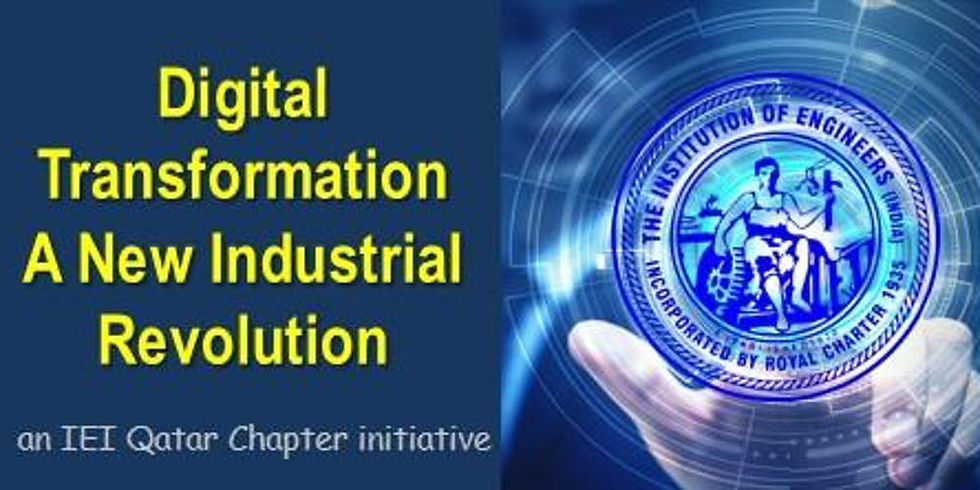Theme for 51st Engineers Day Celebration, 2018 | "Digital Transformation: A New Industrial Revo
- Swaraaj
- Sep 15, 2018
- 2 min read

Industries around the world are now facing substantial challenges due to recent environmental, societal, economic and technological developments regarding disruptive concepts of Internet of Things, Cyber Physical Systems or Cloud based Manufacturing, which lead to the fourth stage of industrial revolution. Increased digitization which waves out traditional and conventional production concepts including mass production, batch production, continuous process flow and project is the need of the hour.
The first industrial revolution utilised water and steam power for mechanizing production.
During second industrial revolution, application of power was more with the objective to obtain mass production.
During third industrial revolution, industrial automation was introduced, which involved vast application of Electronics and Information Technology.
The fourth industrial revolution, termed as Industry 4.0 is empowered by wide range of digital technology not only in digital realm, which involves artificial intelligence, machine learning, advanced robotics and new formation of automation, but also in physical realm including new materials like graphene, genetic advances as well as biological realm which involves sensors, Internet of Things, Block Chain and Distributed Ledgers, 3D Printing, autonomous vehicles like drones, so on and so forth. Thus Industry 4.0 is focussed on creating intelligent products, processes and procedures that leads to ubiquitous connectivity of people, things and machines. The vision of Industry 4.0 is likely to be adopted worldwide and it might influence other initiatives and cooperative efforts.
In general, there are nine key technological components that progressively make up the foundation of Industry 4.0: Autonomous robots, big data, augmented reality (AR), additive manufacturing, cloud computing, cyber security, IoT, system integration, and simulation.
On a digital platform, Industry 4.0 is applied with three mutually interconnected factors, namely
Digitization and integration of any simple to complex technical - commercial relation,
Digitization of products and service offers and
New market models












Comments